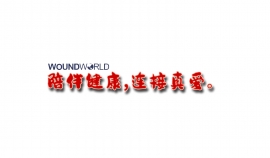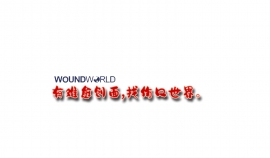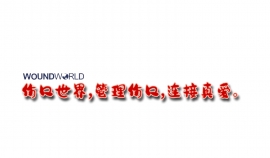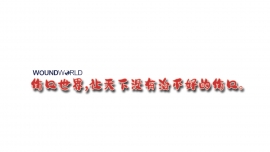文献精选
刘龙飞1 ,王献珍2*
1 青海大学研究生院,青海 西宁
2 青海大学附属医院,青海 西宁
收稿日期:2022年3月22日;录用日期:2022年4月16日;发布日期:2022年4月26日
摘 要
由于感染的参与和严重程度,创面愈合一直是外科医生所关注的问题。因此,创面的愈合总是需要付出额外的努力来管理并随后从伤口部位去除瘢痕。创面处理的基本原则是保持创面清洁、无污染,减轻创面疼痛,减少创面渗出与水肿,预防创面损伤加重,防止创面感染以及促进创面早期愈合。多年以来,外科医师一直在寻找符合上述治疗原则的材料或药物。近年来,生物材料在慢性创面治疗中的作用已得到充分证实。其中一种生物材料是胶原蛋白,它被认为是大多数用于创面愈合配方的关键成分。在这里,我们主要介绍基于胶原蛋白的生物材料用于创面愈合的最新进展,以期为创面愈合的临床研究提供可靠的理论依据和治疗理念。
关键词
胶原蛋白,生物材料,创面愈合
Research Progress of Collagen Material on Wound Healing
Longfei Liu1, Xianzhen Wang2*
1 Graduate School of Qinghai University, Xining Qinghai
2 The Affiliated Hospital of Qinghai University, Xining Qinghai
Received: Mar. 22nd, 2022; accepted: Apr. 16th, 2022; published: Apr. 26th, 2022
Abstract
Because of the involvement and severity of infection, wound healing has always been a concern of surgeons. As a result, wound healing always requires extra effort to manage and then remove the scar from the wound site. The basic principle of wound treatment is to keep the wound clean and pollution-free, relieve the wound pain, reduce the wound exudation and edema, prevent the aggravation of wound injury, prevent wound infection and promote the early healing of wound. For years, surgeons have been searching for materials or drugs that fit these principles. In recent years, the role of biomaterials in the treatment of chronic wounds has been fully confirmed. One such biomaterial is collagen, which is considered a key ingredient in most wound healing formulations. Here, we mainly introduce the latest progress of collagen-based biomaterials for wound healing, in order to provide reliable theoretical basis and therapeutic concept for clinical research on wound healing.
Keywords
Collagen, Biomaterials, Wound Healing
中华医学会医学美容学会激光美容学组,中华医学会皮肤性病学会美容激光学组
[关键词】 皮肤黏膜修复,光声电治疗术后:共识[中图分类号】R751.05[文献标识码】B doi:10.16761/i.enki.1000-4963.2019.05.019
[文章编号】1000-4963 2019)05-0319-04
光电技术治疗皮肤创伤性瘢痕专家共识(2018版)编写组
【摘要】创伤性瘢痕不仅影响局部外观和功能,还可伴有疼痛 、瘙痒、心理问题,严重影响患者生活质量。瘢痕防治仍然是困扰整形美容外科的难题。近年来,随着选择性光热作用及点阵光热作用理论和实践的发展,光电技术给创伤性瘢痕的临床防治带来了突破性进展。上海交通大学医学院附属第九人民医院整复外科专家对近5年临床瘢痕光电治疗经验进行了分析和总结,结合国内外癫痕激光治疗专家共识,组织国内部分专家讨论并制订了适合当前我国医疗条件的光电技术治疗皮肤创伤性瘢痕专家共识(2018版),为临床使用提供参考标准。
【关键词】创伤和损伤:瘢痕; 激光;光;射频;共识
Consensus on treatment of skin traumatic scars with photo. electrie therapy and radio-frequeney technology(2018 version) Writing group of consensus on treatment of skin traumatic scars with photoelectric therapy and radio-frequency technology (2018 version)
Corresponding author : Yao Min , 200011 , Department of Plastic and Reconstructive Surgery , Shanghai Ninth People ′s Hospital , Shanghai Jiao Tong University School of Medicine , Email : my058@ vip. sina. com
【Abstract】Traumatic scars not only affect local appearance and function, but also may be accompanied by pain , itching, and even psychological problems, which seriously affect the quality of patients life. The prevention and treatment of scars are still quite challengeable for plastic and cosmetic surgery Recently, photoelectric therapy and radio-frequency technology have brought breakthroughs in the clinical prevention and treatment of traumatic scars due to the developments of theory and practice on selective photothermolysis and fractional photothermolysis. Based on the analysis and summary of experience of treatment of traumatic scars with photoelectric therapy and radio. frequency technology in the past 5 years, the experts in the Department of Plastic and Reconstructive Surgery of Shanghai Ninth People's Hospital of Shanghai Jiao Tong University School of Medicine, together with expert consensus on treatment of scar using laser at home and abroad, organize the experts in the field of scar management from different regions in China to discuss and write the consensus on treatment of skin traumatic scars with photo electric therapy and radio-frequency technology (2018 version). This consensus is suitable for currently medical environment in China and aimed to provide standardized protocols for the treatment of skin traumatic scars in clinic.
【Key words】 Wounds and injuries ; Cicatrix ; Lasers ; Light; Radio-frequency ; Consensus
DOI:10 . 3760/cma . j . issn . 1009-2587 . 2018 . 09 . 007
通信作者:姚敏,200011 , 上海交通大学医学院附属第九人民医 院整复外科,E mail: my058@ vip . sina . com
贾利军,贺亚楠,李向瑞,吴 丽,袁雅卓,王贝贝,张淑利
Effects of hydrocolloid dressing on the peristomal skin in patients undergoing painless coonoSCOD1JA Liiun, HE Ya' nan, Ll Xiangrui, WU Li, YUAN Yazhuo, WANG Beibei, ZHANG Shuli(The First Affiliated Hospital of Zhengzhou University, Henan 450052 China)
Abstract Obiective: To explore the effects of modified hydrocolloid dressing ( HCD) on peristomal skin in painless colonoscopy patients.
Methods: A total of 64 patients with a stoma who underwent painless colonoscopy in the First Affiliated Hospital of Zhengzhou University from January 2022 to December 2022 were selected as the study subjects, and patients were divided into modified HCD application group(group H) and control group (group C) by random number table method,32 cases in each group Before the colonoscopy, group C implemented routine care, using a non-woven hole towel to cover the patient's abdomen; group Hused modified HCD(3M) to apply to the peristomal skin and perform colonoscopy. The grade of peristomal dermatitis(assessed by international wound evaluation standards), the percentage of peristomal skin moisture, the pH of the peristomal mucosa and the colony forming units (CFU) count of peristomal skin were observed
Results: After the intervention. the grade of peristomal dermatitis in group H was significantly better than that in group C, the CFU was significantly less than that in group C, and the percentage of skin moisture around the stoma was significantly lower than that in group C(all P<0.001), There was no significant statistical difference in skin temperature, and pH of the peristomal skin between the two groups after the intervention(P>0.05).
Conclusion: Modified HCD can provide reliable peristomal skin protection during painless colonoscopy.
Keywords hydrocolloid dressings: painless colonoscopy: peristomal dermatitis: potential of hvdrogen : colony forming unit
摘要 目 的:探 讨 改 良 水 胶 体 敷 料 (hydrocolloid dressing, HCD)对 无 痛 结 肠 镜 检 查 (painless colonoscopy)病 人 造 口 周 围 皮 肤 (peristomal skin)的影响。方法:选取2022年1月—2022年12月在郑州大学第一附属医院行无痛结肠镜检查的64例造口病人作 为研究对象,采用随机数字表法分为改良 HCD应用组(H 组)和对照组(C组)各32例。在结肠镜检查前,C组实施常规护理,使用 无纺布洞巾覆盖病人腹部;H 组在C组基础上采用改良 HCD(3M)粘贴于造口周围皮肤,实施结肠镜检查。观察两组病人造口周围 性皮炎分级(采用国际伤口创面评价标准评估)、造口周围皮肤水分百分比、造口周围黏膜酸碱度(pH 值)和造口周围皮肤菌落计 数。结果:干预后,H 组病人造口周围性皮炎分级明显优于 C组,菌落计数明显少于 C组,造口周围皮肤水分百分比明显低于 C组 (均P<0.001);干预后两组病人造口周围皮肤黏膜酸碱度和温度比较差异无统计学意义(P>0.05)。结论:在无痛结肠镜检查期 间,改良 HCD可为病人提供可靠的造口周围皮肤保护作用。
关键词 水胶体敷料;无痛结肠镜检查;造口周围性皮炎;酸碱度;菌落形成单位 doi:10.12104/ji.ssn.1674-4748.2023.16.004
作者简介 贾利军,主管护师,硕士研究生在读,单位:450052,郑州大 学第一附属医院;贺亚楠、李向瑞、吴丽、袁雅卓、王贝贝、张淑利(通讯 作者)单位:450052,郑州大学第一附属医院。 引用信息 贾利军,贺亚楠,李向瑞,等.改良水胶体敷料对无痛结肠镜 检查病人造口周围皮肤的影响[J].全科护理,2023,21(16):2176-2179.




